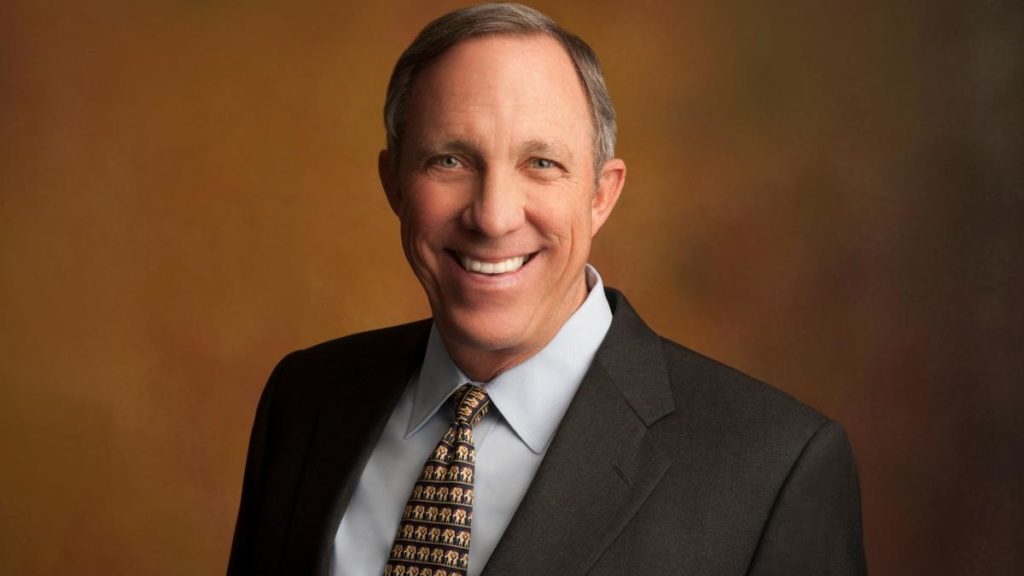

Cutler Dawson, retired U.S. Navy Vice Admiral and CEO and president of Navy Federal Credit Union—the largest credit union in the world with more than $80 billion in assets, 15,000 employees and 7 million members—knows a thing or two about effective leadership, having served as past commander of the Navy’s 2nd Fleet.
Dawson has served as CEO of Navy Federal since 2004, leading an organization that has never undergone a round of layoffs as many financial institutions in the U.S. are shuttering their brick and mortar branches. Cutler recently spoke with Chief Executive about how his 34 years of service in the U.S. Navy influenced his role as CEO, the importance of people at Navy Federal and his ideas on leadership.
Q: Which lessons that you learned during your esteemed military career transferred over to your role as CEO? Were there any surprises for you coming into the business world from the Navy?
A: I was fortunate that I had 6 commands at sea when I was in the Navy. The first one was a small ship called an oceangoing tug that I took command of when I was 27 years old, and it’s kind of the equivalent of being a CEO—particularly when you’re out in the middle of the ocean and there’s no one to make decisions but you. I had a crew of 85, I had missions to accomplish and I had to get it done.
“It all kind of works the same, whether you’re in the Navy or in a for-profit business.” – Cutler Dawson
Before I went to that ship, a mentor of mine Pete Hedley told me the more you command a ship, the better you get at it. You learn lessons of what works, what doesn’t work, and as you get larger ships you will learn from the smaller ships you had before that. And I found that to be true as I worked my way up to a cruiser, then a carrier battle group of 12 ships and about 12,000 people, and then last as fleet commander of the 2nd Fleet, with all the ships on the eastern seaboard.
All of those were like being a CEO in some way, and when I came to Navy federal 13 years ago, I had that baseline. It’s a lot of thinking about the management of risk—risk-reward on what you want to accomplish, what it takes to get there, what the rewards are and what are the perils and dangers in getting there. It all kind of works the same, whether you’re in the Navy or in a for-profit business.
Q: How is Navy Federal approaching onboarding new members and attracting the next generation of members?
A: Navy Federal has been very fortunate for the 84 years that we’ve been in existence, we’ve always had those younger members. When new recruits come into the service, 18 to 19-year-olds are those new members. We’re fortunate today that we’re the on-base credit union at Great Lakes, where all the new Navy recruits come in, the on-base credit union at Paris Island where half of the Marine Corps comes in, and we learn from that crucible of what works for them, what they’re asking for and what they like and don’t like.
We put a lot of effort into digital and mobile, but we also put a lot of effort into branches, because we believe that people want to be face-to-face sometimes. Also, in our contact center, when I first got here 13 years ago our wait time on the telephone for people calling in was 45 minutes, at times. We said, “We’ve really got to work on this, that’s really too long. Our members really love us, but they’re not going to love us much longer.” And last year our average wait time on the phone was 47 seconds. Big difference.
Q: How has the credit union landscape evolved over the past decade?
A: There are fewer credit unions and community banks than when I started 13 years ago. Size matters, and it allows you to make offerings and investments that smaller entities can’t do, and in today’s world, particularly with digital and what people demand, they don’t want to wait for things, and you have to have it available for them and sometimes that requires economies of scale. Fortunately for Navy Federal and a number of other large credit unions, and I would say the same is true for community and regional banks, they’ve been able to keep up, as well, but I think this is going to be with us for a while.
Q: When you are adding members to your leadership team, what are some key attributes you look for?
A: I’ve found that you need to try to groom people from the inside to move up. But as we’ve grown and become more complex, we need skills from people that don’t grow up at Navy Federal, they come to us from other places. The art form is to attract the best and have them be part of the team from day one. I’ve found that the long-timers who grow up within the Navy Federal organization recognize that they need the help. They appreciate people coming in from other places with their skills and they do their best to see that they are welcomed and mentored as to our way of doing business, but at the same time they want to learn other ways of doing business, so we can improve.
It’s really worked for us, but I think it’s a tough balance for any organization: How much do you promote from the inside and how much help do you need from the outside where you have skills that are lacking. When you can get that combination right, and I think we have here at Navy Federal, it’s terrific.




0

1:00 - 5:00 pm
Over 70% of Executives Surveyed Agree: Many Strategic Planning Efforts Lack Systematic Approach Tips for Enhancing Your Strategic Planning Process
Executives expressed frustration with their current strategic planning process. Issues include:
Steve Rutan and Denise Harrison have put together an afternoon workshop that will provide the tools you need to address these concerns. They have worked with hundreds of executives to develop a systematic approach that will enable your team to make better decisions during strategic planning. Steve and Denise will walk you through exercises for prioritizing your lists and steps that will reset and reinvigorate your process. This will be a hands-on workshop that will enable you to think about your business as you use the tools that are being presented. If you are ready for a Strategic Planning tune-up, select this workshop in your registration form. The additional fee of $695 will be added to your total.

2:00 - 5:00 pm
Female leaders face the same issues all leaders do, but they often face additional challenges too. In this peer session, we will facilitate a discussion of best practices and how to overcome common barriers to help women leaders be more effective within and outside their organizations.
Limited space available.

10:30 - 5:00 pm
General’s Retreat at Hermitage Golf Course
Sponsored by UBS
General’s Retreat, built in 1986 with architect Gary Roger Baird, has been voted the “Best Golf Course in Nashville” and is a “must play” when visiting the Nashville, Tennessee area. With the beautiful setting along the Cumberland River, golfers of all capabilities will thoroughly enjoy the golf, scenery and hospitality.
The golf outing fee includes transportation to and from the hotel, greens/cart fees, use of practice facilities, and boxed lunch. The bus will leave the hotel at 10:30 am for a noon shotgun start and return to the hotel after the cocktail reception following the completion of the round.